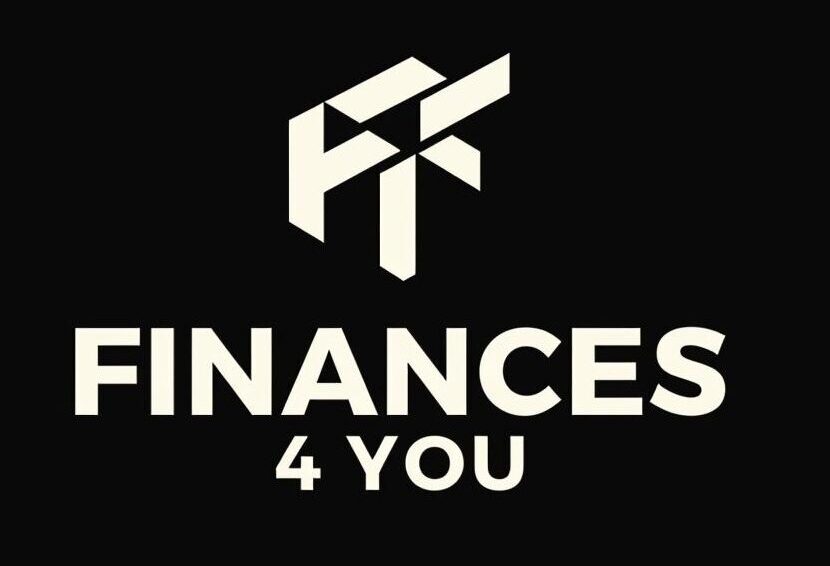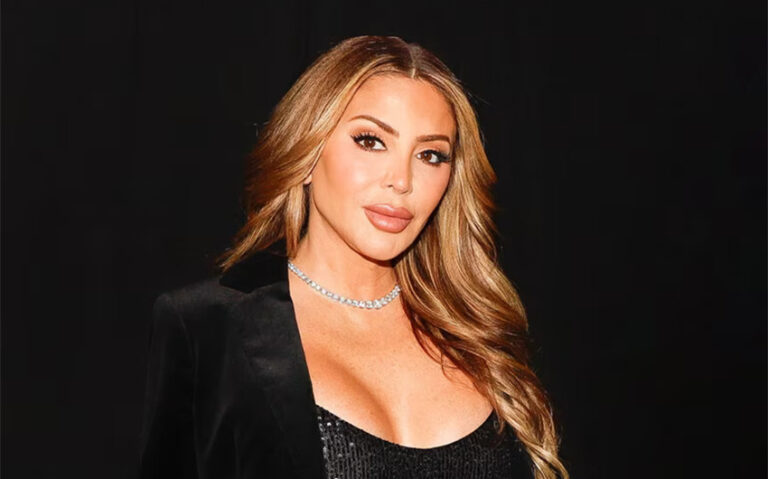Why Life Insurance in Your 30s is a Smart Financial Move
Your 30s bring exciting changes—perhaps you’re signing mortgage papers, welcoming a little one, or finally landing that promotion you’ve worked toward. But with these joyful milestones come new responsibilities that deserve protection. This is exactly why life insurance 30s becomes such a crucial consideration during this transformative decade.
For those of you scanning for quick answers (we get it, you’re busy!), here’s what you need to know at a glance:
| Key Points About Life Insurance in Your 30s | Details |
|---|---|
| Average Monthly Cost | $25-30 for $500,000 coverage (20-year term) |
| Recommended Coverage | 10-15 times your annual income |
| Best Time to Buy | Early in your 30s (premiums increase ~8% each year) |
| Main Benefits | Lower rates, easier approval, protecting growing obligations |
Think of your 30s as the sweet spot for life insurance. You’re likely healthier now than you’ll ever be again (sorry, but science backs this up!), while simultaneously taking on substantial financial commitments like student loans, a mortgage, or supporting dependents. This combination creates the perfect timing for securing coverage.
The numbers tell a compelling story: At 30, a healthy male can lock in a $250,000, 20-year term policy for about $13 monthly. Wait until 40? That same protection jumps to around $18—a 38% increase just for waiting a decade. For women, the rates start even lower. The math is clear—every year you delay costs you money.
But life insurance 30s isn’t just about saving a few dollars today. According to research on aging risks, over 25% of today’s 20-year-olds will experience a disability before retirement. By securing coverage while you’re healthy, you’re essentially locking in your insurability before any potential health complications arise.

Many young professionals believe their employer’s life insurance is sufficient protection. I hate to be the bearer of bad news, but that coverage typically equals just 1-2 times your annual salary—far below the recommended 10-15 times income for meaningful protection. Plus, that policy vanishes when you change jobs (and let’s be honest, job-hopping is practically a sport in your 30s).
Your 30s are also prime wealth-building years. The right life insurance policy can even complement your financial strategy, especially if you explore permanent policies with cash value components. While your primary goal might be protection, certain policies can serve double-duty as part of your broader wealth management plan.
Looking for more comprehensive guidance on navigating your finances during this crucial decade? Check out our resources on building wealth in 30s and financial advice for 30s to ensure you’re making the most of these formative financial years.
Why “Life insurance 30s” Matters
Your 30s bring exciting milestones that transform your financial landscape. That first home purchase, the pitter-patter of little feet, or that hard-earned career advancement all create a mix of joy—and responsibility. Let’s explore why life insurance 30s has become such a critical consideration for today’s millennials.
Mounting Financial Responsibilities
Remember when your biggest financial worry was splitting the dinner bill? Those days are likely behind you now. Most 30-somethings are juggling significant financial commitments:
That mortgage payment on your $250,000+ home would leave your partner drowning in debt if your income suddenly disappeared. Your growing family depends entirely on your ability to provide—for the next two decades at minimum. And those student loans that helped you land your career? They don’t magically disappear if something happens to you, especially if someone co-signed.
Take Jim and Pam, both 32, who recently bought their first home while expecting their first child. Their smart approach? Purchasing a 30-year term policy covering their mortgage alongside a 20-year policy for their child’s upbringing. This “laddering” strategy ensures maximum protection during their years of greatest financial vulnerability.
And let’s not forget those employer coverage gaps that appear when you switch jobs—precisely when you might need protection most.
The cost advantage of Life insurance 30s
Here’s where the math gets interesting—and compelling. Your 30s represent the sweet spot for insurance value, where youth and responsibility intersect perfectly.
When you secure a term policy at 32, you lock in that premium rate for the entire term. That $25-30 monthly payment for $500,000 of coverage stays frozen in time, even as your biological clock keeps ticking. Industry data shows premiums increase roughly 8% annually throughout your 30s, meaning a five-year delay from 30 to 35 could cost you nearly 50% more for identical coverage.
Consider these real numbers:
A 30-year-old man in excellent health pays about $14 monthly for a 10-year, $250,000 policy. By 40, that jumps to $18. At 50? A whopping $37 per month.

This steady climb reflects the mortality tables from the Social Security Administration that insurance companies use for pricing. The math is simple: each birthday slightly increases your risk profile, and your premiums reflect this reality.
Plus, locking in rates now creates an inflation buffer against rising insurance costs in the future—something your budget will thank you for in the decades ahead.
Future health unknowns & Life insurance 30s
While saving money matters, protecting your insurability before health issues emerge might be even more crucial.
Scientific research on aging risks confirms what we suspect: many chronic conditions begin appearing in our late 30s and 40s. High blood pressure, type 2 diabetes, and cholesterol issues don’t announce their arrival with trumpets—they often sneak in during routine physicals, potentially derailing your insurance options.
The Social Security Administration’s sobering statistic? Over 25% of today’s 20-somethings will experience disability before retirement age. Waiting until health problems emerge could leave you facing:
Underwriting problems that lead to premium hikes, policy exclusions, outright denials, or limited options with higher costs and fewer benefits.
Sarah learned this lesson at 38 when a routine physical revealed slightly liftd blood pressure. That single finding bumped her from “Preferred” to “Standard” rating, increasing her premium by 35%. One doctor’s visit, one measurement, one significant financial impact.
Beyond the numbers, there’s the immeasurable value of peace-of-mind—knowing you’ve secured coverage while healthy provides emotional protection for both you and your loved ones.
As we often remind our Finances 4You clients, your 30s offer a unique wealth-building opportunity. Life insurance is one piece of that puzzle, working alongside your investment strategy to create true financial resilience. The protection you secure today becomes the foundation for tomorrow’s prosperity.
Want to learn more about making smart financial moves in this critical decade? Check out our guide to Financial Advice for 30s for a complete roadmap.
Choosing Your Policy: Types, Coverage & Riders
When exploring life insurance in your 30s, you’ll encounter several policy types. Understanding the differences isn’t just about checking a box—it’s about finding the right financial safety net for your growing responsibilities.
Term or Permanent? Matching goals
Term Life Insurance is like renting an apartment—affordable and perfect for a specific timeframe. It provides coverage for a defined period (typically 10, 20, or 30 years) and won’t break the bank. Most 30-somethings gravitate toward term policies because they align perfectly with time-limited responsibilities:
- Your mortgage (imagine matching your 30-year term policy with your 30-year mortgage)
- Your children’s journey to independence (until they’re financially on their own)
- Those student loans that finally have an end date in sight
Permanent Life Insurance, on the other hand, is more like buying a house. It costs more upfront but builds equity over time through its cash value component. Whole life and universal life are the main permanent options, and they make sense if you’re thinking about:
- Lifelong coverage that stays with you regardless of health changes
- Building a tax-advantaged nest egg alongside your other investments
- Creating an inheritance for loved ones
- Having financial flexibility with cash value you can borrow against
Many of our Finances 4You clients find success with a blended approach—like Lauren and Mike, who purchased a substantial term policy to cover their mortgage and young children’s needs, plus a smaller permanent policy that will grow alongside their other investments.
| Feature | Term Life | Permanent Life |
|---|---|---|
| Cost | Lower premiums (e.g., $25-30/month for $500K) | 5-10x higher premiums than term |
| Duration | Fixed period (10-30 years) | Lifetime coverage |
| Cash Value | None | Accumulates over time |
| Flexibility | Simple, straightforward | Various options and features |
| Best For | Pure protection, specific obligations | Lifetime needs, wealth building |
As financial advisor Mark Fitzpatrick often tells our clients, “Term life insurance is like buying a big umbrella when your kids are young and your roof is still being paid for—it provides the most protection per dollar during the years you need it most.”
How much do you really need?
Figuring out your coverage amount for life insurance in your 30s can feel like solving a puzzle, but it doesn’t have to be complicated.
The simplest approach is the income replacement method—aim for 10-15 times your annual income. This gives your family a financial cushion that can generate income through safe investments while they adjust to life’s new reality.
For a more custom calculation, many of our clients use the DIME formula, which accounts for your complete financial picture:
Debts and final expenses cover everything from credit card balances to funeral costs (which average $7,000-$12,000).
Income replacement calculates how many years your family would need support multiplied by your annual income.
Mortgage balance ensures your family can stay in their home without financial stress.
Education costs for children helps secure their future even if you’re not there to see it.
Take Jessica, a 34-year-old marketing manager making $80,000 annually. With two children under 5, a $350,000 mortgage, and about $30,000 in other debts, her calculation looked like:
- Debts: $30,000 + $10,000 (final expenses) = $40,000
- Income: $800,000 (10 × $80,000)
- Mortgage: $350,000
- Education: $200,000 ($100,000 per child)
- Total needed: $1,390,000
This number might seem high, but remember—your needs will evolve as you build wealth in your 30s. We recommend reviewing your coverage after major life milestones like having another child, buying a bigger home, or receiving a significant promotion.
Key riders worth considering
Think of riders as the customization options that make your policy truly yours. While they add to your premium, the right riders can provide invaluable protection custom to your unique situation.
Disability Waiver of Premium is like insurance for your insurance. If you become disabled and can’t work, this rider keeps your policy active without requiring premium payments. For someone in their 30s looking at potentially decades of premium payments, this peace of mind is often worth the modest additional cost.
Child Rider provides a simple, affordable way to cover all your children (current and future) under one umbrella. Rather than purchasing separate policies for each child, this single rider typically provides $10,000-$25,000 of coverage per child until they reach adulthood.
Accelerated Death Benefit gives you access to a portion of your death benefit if you’re diagnosed with a terminal illness. This financial flexibility can help maintain your quality of life or pursue treatments not covered by health insurance during an incredibly difficult time.
Conversion Option is the ultimate flexibility tool. It allows you to convert your term policy to a permanent one without a new medical exam—regardless of health changes. This can be a lifesaver if you develop health issues during your term but still want coverage beyond the term’s end.
Return of Premium works like a forced savings plan—you pay higher premiums (usually 30-50% more), but if you outlive your term, you get all that money back. As Ben, one of our 32-year-old clients put it, “It’s like betting against myself in the best possible way. Either my family is protected, or I get a nice chunk of change back in 20 years.”

The right riders can transform a standard policy into a custom financial tool that grows with you through your 30s and beyond. At Finances 4You, we’ve found that thoughtfully selected riders often provide the most value when they address your specific concerns rather than trying to add every available option.
Buying & Saving Smart: Application to Approval
Getting life insurance in your 30s has become remarkably easier in recent years. What used to be a paperwork-heavy process with weeks of waiting can now often be completed in days. Let’s walk through how to steer from application to approval while keeping more money in your pocket.
The Application Process
Buying life insurance today feels more like online shopping than the intimidating process it once was. Start by using online comparison tools to gather quotes from several insurance companies. You’d be surprised how much rates can vary between carriers for identical coverage—sometimes by as much as 30%!
When Emily, a 34-year-old marketing manager, shopped for her first policy, she found a $40 monthly difference between the highest and lowest quotes for the same $500,000 coverage. That’s nearly $500 saved per year just by comparing options.
Next, you’ll need to decide between traditional policies requiring a medical exam or the increasingly popular no-exam options. While skipping the exam sounds convenient, be aware that convenience typically comes with a cost premium of 15-30%. The medical exam itself is quite basic—height, weight, blood pressure, plus blood and urine samples—and usually takes less than 30 minutes.
During the application, be prepared to share details about your medical history, family health background, lifestyle habits, and financial situation. Be completely honest here—insurance companies have access to your medical records and prescription history, and finding undisclosed information can lead to denied claims later.

Many insurers now offer accelerated underwriting for healthy applicants in their 30s, potentially allowing you to skip the medical exam entirely and receive approval within 24-48 hours. This streamlined process is perfect for busy professionals who want protection without the wait.
Common mistakes to avoid
Even savvy 30-somethings make mistakes when buying life insurance. Don’t let these common pitfalls derail your protection plan:
Under-insuring is perhaps the most dangerous mistake. I’ve seen clients choose coverage based solely on what fits their monthly budget rather than what their family would actually need. A policy that’s too small defeats the whole purpose of having insurance in the first place.
Many young professionals place too much faith in their employer-provided coverage. While this benefit is valuable, it’s typically limited to just 1-2 times your annual salary—far below the recommended 10-15 times income—and vanishes when you change jobs.
Focusing solely on price is another common error. While affordability matters, the cheapest policy isn’t always the best value. Consider the company’s financial strength ratings (look for A or better from AM Best), customer service reputation, and policy features before making your decision.
Perhaps the costliest mistake is procrastination. Every year you wait in your 30s means higher premiums—approximately 8-10% annually. That means a 35-year-old typically pays about 40% more than a 30-year-old for identical coverage.
Finally, life changes quickly in your 30s—marriages, divorces, children—so regularly reviewing your beneficiaries is crucial but often forgotten. Set a calendar reminder to check annually.
Money-saving hacks for Life insurance 30s
Smart shopping can substantially reduce your premiums without sacrificing coverage. Here’s how to get more protection for less:
Improve your health before applying by making small changes 3-6 months before your application. Insurers typically look at your health over the past year, so even short-term improvements can make a difference. Quitting smoking is the single most impactful change—non-smokers pay 50-80% less for coverage. Working on your BMI, cholesterol, and blood pressure can also bump you into a better rating class, potentially saving thousands over the life of your policy.
Consider layering (or “laddering”) your policies instead of buying one large policy. This strategy involves purchasing multiple smaller policies with different term lengths to match your decreasing obligations over time. For example, you might get a 30-year policy for your mortgage, a 20-year policy for children’s education, and a 10-year policy for other debts. This approach provides maximum coverage when you need it most while reducing premiums as obligations decrease.
Most people don’t realize that paying annually instead of monthly can save you 2-8% on premiums. If cash flow allows, this simple change can add up significantly over time.
Working with an independent agent rather than a captive agent (who represents just one company) gives you access to more options and often better rates. Independent agents can compare offers across dozens of carriers to find the best fit for your specific health profile and needs.
“Taking the medical exam can save you 10-30% compared to no-exam policies,” explains insurance expert Jeff Rose, CFP®. “And if you’re planning to ladder multiple policies, you can often use one exam result for applications within a six-month window, saving both time and exam fees.”
Can you get covered with health issues?
Having health concerns doesn’t mean you can’t get life insurance in your 30s. It might affect your rates or options, but coverage is almost always available.
The impact varies widely depending on the condition. Controlled conditions like mild asthma or well-managed anxiety might result in standard rates or just a slight premium increase. More serious chronic conditions like diabetes or heart disease typically mean higher premiums but not necessarily a decline. Recent serious diagnoses like cancer usually require waiting periods (often 1-5 years post-treatment) before coverage becomes available.
If traditional policies aren’t an option due to health issues, consider these alternatives:
Guaranteed issue policies skip medical exams and health questions entirely, but they typically offer lower coverage amounts (usually under $25,000) at significantly higher premiums. These should be a last resort rather than a first choice.
Graded benefit policies provide full coverage after a waiting period (typically 2-3 years), during which only accidental deaths would receive the full benefit. These offer a middle ground for those with serious health concerns.
According to research on health conditions and underwriting, honesty during the application process is absolutely crucial. Insurance companies can and do investigate claims, especially in the first two years of a policy (the contestability period), and can deny benefits if they find undisclosed health information.
At Finances 4You, we’ve helped many clients with health concerns find appropriate coverage. The key is working with someone who understands which carriers are more lenient with specific conditions. Your 30s are still an ideal time to secure coverage, even with health issues, as conditions often worsen with age, making future applications more difficult or expensive.
For more information about creating a comprehensive financial plan that includes appropriate life insurance coverage, check out our guide on achieving financial objectives.
Frequently Asked Questions about Life Insurance in Your 30s
Is employer-provided life insurance enough?
In short: rarely. While that free coverage from your workplace feels like a nice perk, it comes with some serious limitations that most 30-somethings need to understand.
Think about it—most employer policies only provide 1-2 times your annual salary. If you’re making $70,000, that’s just $70,000-$140,000 of coverage. Compare that to the recommended 10-15 times your income for truly protecting your family, and you’ll see the significant gap.
The bigger issue? That coverage disappears when you leave the company. Given that millennials change jobs every 2-3 years on average, you could find yourself suddenly unprotected during career transitions—exactly when you might be financially vulnerable.
James, a 34-year-old software developer, learned this lesson when he left his corporate job for a startup. “I assumed I could just buy similar coverage on my own,” he told us. “But a minor health condition I developed meant my personal policy cost nearly three times what I expected.”
Your employer policy also lacks customization—no riders, no cash value options, and no ability to tailor it to your specific family situation. It’s basically a one-size-fits-all approach to something that should be highly personalized.
The smart move? View that employer coverage as a nice bonus, not your main protection. Take the free benefit, but build your personal safety net beyond it.
How do I calculate the right coverage amount?
While “10-15 times your income” is a helpful starting point, your life insurance 30s needs are as unique as your financial situation. Here’s a more thoughtful approach to finding your perfect coverage amount:
Start by mapping out your financial obligations. This includes your mortgage balance, student loans, car loans, credit cards, and any other debts you’re carrying. For many 30-somethings, this alone can easily reach $350,000-$500,000.
Next, think about income replacement. How many years would your family need financial support? A spouse with young children might need 8-10 years of replacement income to adjust without financial stress. If your annual income is $75,000, that’s $600,000-$750,000 right there.
Don’t forget about future expenses like college tuition for your children. With education costs rising about 5% annually, setting aside $150,000 per child is increasingly becoming the minimum.
Then subtract existing resources—your savings, investments, other insurance policies, and potential Social Security benefits. Many people are surprised to learn that Social Security provides survivor benefits for dependent children until age 18.
Maria and Carlos, both 33, went through this calculation recently: “We were shocked to find we needed over $1.2 million in coverage—way more than we initially thought. But when we broke down our mortgage, two kids’ future college expenses, and income replacement, the number made perfect sense.”
Remember to revisit this calculation every few years. As you achieve financial objectives and build wealth, your insurance needs will evolve.
What happens when my term policy expires?
It’s 20 or 30 years in the future—your term policy is ending, and you’re wondering what happens next. This is a question worth considering even when you’re buying life insurance in your 30s.
If you’ve played your financial cards right, you might simply let the policy expire. By your 50s or 60s, your mortgage might be paid off, your kids financially independent, and your retirement accounts well-funded. Many people find they no longer need the same level of coverage.
However, if you still have financial obligations, you have options. Most policies allow renewal without a new medical exam—convenient, but expensive. Expect premiums to jump significantly based on your current age, often 5-10 times what you were paying.
The conversion option is worth its weight in gold for many policyholders. This feature allows you to transform some or all of your term coverage into a permanent policy without new medical underwriting. This is particularly valuable if your health has declined over the years.
“I always tell clients to start thinking about the end of their term at least three years before it happens,” says financial planner Sarah Johnson. “This gives you time to weigh options without making rushed decisions.”
If you opted for a return-of-premium rider when you purchased your policy, you’ll get a nice surprise when your term ends—all your premiums returned to you. On a 30-year, $500,000 policy, this could easily amount to $30,000 or more. Some of our Finances 4You clients use this windfall to fund a smaller permanent policy for final expenses or as a legacy gift.
The best strategy is the one that aligns with your financial situation when the term ends. By that point, your needs will have evolved considerably from when you first purchased coverage in your 30s.
Conclusion
Securing life insurance in your 30s isn’t just a smart financial move—it’s an act of love and responsibility toward those who matter most in your life. As we’ve explored throughout this guide, this decade presents the perfect storm of opportunity: lower premiums, better health, and growing responsibilities that deserve protection.
Think of life insurance as planting a tree. The best time to plant was 20 years ago, but the second-best time is now. Every year you wait means watching premiums climb higher while your insurability potentially decreases. The financial math is clear and compelling: lock in rates today that will never be lower in your lifetime.
But beyond the numbers lies something more meaningful—peace of mind. There’s something profoundly comforting about knowing you’ve created a safety net for your family. That mortgage hanging over your head? Covered. Your children’s education? Protected. Your partner’s financial stability? Secured.
At Finances 4You, we see life insurance as part of a holistic approach to building wealth and security. It’s not about planning for death—it’s about living more confidently today. It’s about sleeping better at night knowing you’ve handled this crucial piece of your financial puzzle.
We’ve worked with countless clients in their 30s who initially postponed this decision, only to express immense relief once they finally took action. As one client recently told us, “It feels like I’ve finally become a real adult—someone who thinks beyond next month’s budget.”
Your journey toward financial security doesn’t end with life insurance, of course. We encourage you to explore our additional resources on wealth management and achieving financial objectives to continue building your financial foundation.
Life insurance in your 30s isn’t just affordable—it’s transformative. It converts financial uncertainty into confidence and worry into security. The protection you put in place today could be the most meaningful legacy you leave behind.
Don’t wait for “someday” to make this crucial decision. Your future self—and those who depend on you—will be grateful you acted now, when the advantages are greatest and the options most favorable.
Take that first step today. Your family’s tomorrow is worth it.






1 thought on “Life Insurance for Millennials—Protecting Your Future in Your 30s”
Pingback: How to Save for Your Kid’s College and Still Afford Coffee - Finances 4 You
Comments are closed.